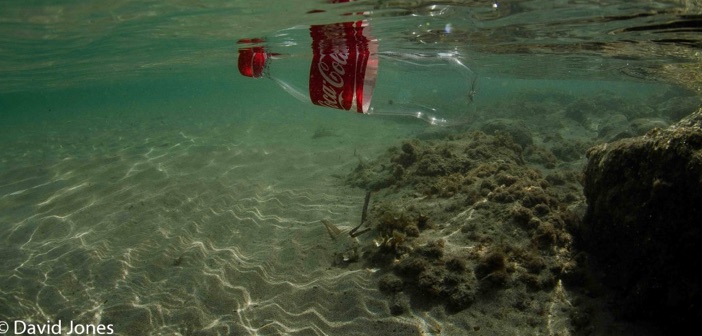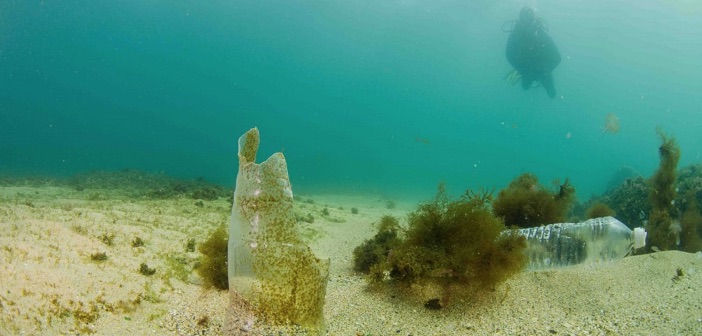Plastic Bottle Oceans
1500 plastic water bottles are used every second in the United States alone (1). That doesn’t include other drinks, cosmetics, detergents etc. In Ireland we drink more than our fair share of bottled water and just imagine what the worldwide figure for plastic bottle consumption per second must be.
We don’t often think about pollution as something that we personally impact every day. After all, you don’t litter. Usually we consider power plants, chemicals manufacturers and industrial activities as the main culprit, but not ourselves going about our daily business. Plastic, however, is a source of pollution that has become ubiquitous in our daily lives. Its proliferation causes some plastic to end up in our oceans impacting marine creatures and even our own food. Currently, it is estimated that in the world’s oceans fish outnumber plastic particles by 5:1 (by weight) and that by 2050 plastic particles will outnumber fish (2). Many marine birds like the albatross mistake plastic bottle caps for food as tragically shown in the Chris Jordan documentary Midway. A new documentary A Plastic Ocean, released to rent or buy just last week, also portrays the heartbreaking facts of what we are doing to our oceans through plastic on a much more widespread basis.
How does plastic get in the ocean?
Due to waste mismanagement and illegal dumping bottles and other plastics are ending up in the ocean and gradually break down into tiny particles. They don’t disappear, they just remain in our oceans as microscopic pollutants. The tiny plastic particles are then mistakenly eaten by zooplankton which are then eaten by fish which are then eaten by humans. We are corrupting our own food chain. All this is attributed to our over reliance on plastic, people not having any refuse facilities and those who do failing to use them correctly.
So what’s the alternative?
Glass and aluminium can be recycled indefinitely without any impact to quality. The same is not the case for plastic. When a plastic bottle is recycled it is downcycled – it is not made into another plastic bottle. Instead, plastic is made into a lesser strength plastic and turned into items such as carpets, bags, pens etc. These items then eventually end up in landfill so a plastic bottle of coke will eventually go the landfill after a temporary spell of being a bag but a can of coke can keep becoming a can of coke forever. The same goes for a glass bottle or a can of beans. Not all plastic bottles are put in the recycling bin and may end up in landfill. Even if it is sent for recycling there are reports that some recycling plants can’t handle the volume so end up dumping the material instead (3,4,5).
If you buy plastic, ensure you recycle it. However the better option is to try and decrease the amount of plastic you consume.
Here are a few ideas:
Water
Out and about: Bring your own reusable water bottle. In the past I used to leave the house with wallet, keys and phone. Now I’ve added water bottle to that list.
At home: If you buy bottled water why not invest in a water filter. A standard jug with filter costs around €30 with replacement filters costing about €60 per year. Buying a half litre bottle of water every day costs approximately €456 a year. You could even consider getting filter faucets for your tap for convenience.

Soft drinks
Out and about: Switch to cans or glass bottles.
At home: Invest in a soda stream. A standard unit costs about €130 with replacement gas and flavouring costing in total about a €1 per litre. Buying a half litre bottle of coke every day costs approximately €511 a year.
Beauty products
Health food shops and LUSH sell products like cleanser, shampoo and deodorant as solid bars. They can come unpackaged or in paper which can usually be recycled or composted. They are particularly good for air travel as they won’t spill and they don’t need to be specially packed and shown to security. If you buy cosmetics on sites like Etsy, it is possible to buy customised products and this includes the type of packaging you prefer.
As a non-scientifically verified experiment I compared how long a bottle of shampoo lasted my husband versus my shampoo bar. My €9 shampoo bar lasted 8 months and his €1 bottle lasted him two months. This would suggest that a bottle is half the price of a bar, however considering my husband has the typical male short hair style and my hair extends to my mid-back I think it is fair to assume that I would use twice as much shampoo and therefore the price would probably be quite similar.
Products like deodorant, scrubs and masks are easy to make at home. There are many websites with recipes using products like avocado, egg white, olive oil, lemon juice.
I make a scrub from, green tea, olive oil and honey. My skin doesn’t look any different to when I used the more expensive conventional products and an added bonus is that if children or pets get near them there is no safety concern because the ingredients are food.

Detergents
Your kitchen cupboard no doubt has multiple plastic bottles of products for the kitchen, bathroom, car and for different materials wood, glass, metal, floors, windows ….
Most people only use them for their intended purpose (thank you marketing departments!). However, in general an all-purpose cleaner can be used for most jobs and is cheaper. Imagine that crammed cupboard with just one or two bottles instead? The internet is full of people making their own detergents using ingredients like vinegar, soap, lemon juice, baking soda, essential oils that are just as effective. Many of these come in glass or cardboard recyclable packaging. Many products that we buy contain ingredients such as colours, binders and foaming agents that are used for cosmetic purposes rather than cleaning purposes, so by making the products ourselves we consume less but get the same results(6).
Food
Look for things like mayonnaise, ketchup, olive oil, pasta sauces in glass or metal containers. Glass does require more energy to produce but it is fully recyclable and does not contribute to marine pollution like plastic does.
The holy grail of reducing plastic waste is to buy a product in no packaging; think of those refills of draught beer that have started to pop up in off-licences, some health food shops do refills of oils, vinegar, detergents where you can use your own container – no plastic bottle needed. The options in Ireland are unfortunately less than those in other countries but it is worth investigating. There are whole groups on Facebook dedicated to the no-packaging, or zero-waste lifestyle as it is known.
So have a look at home and see whether you need all those plastic bottles. Making some changes could result in a less cluttered home, a fuller wallet and hopefully less pictures of plastic filled albatrosses.
References:
1. http://www.treehugger.com/clean-water/the-us-consumes-1500-plastic-water-bottles-every-second-a-fact-by-watershed.html
2. http://www3.weforum.org/docs/WEF_The_New_Plastics_Economy.pdf
3. http://www.dailykos.com/story/2013/9/18/1239747/-Think-your-plastic-is-being-recycled-Think-again
4. https://www.theguardian.com/sustainable-business/china-green-fence-global-recycling-innovation
5. http://www.waste360.com/business/what-operation-green-fence-has-meant-recycling
6. Chemistry at Home, Exploring the ingredients in everyday products, John Elmsley, Royal Society of Chemistry
Main Image: justoneocean.org
